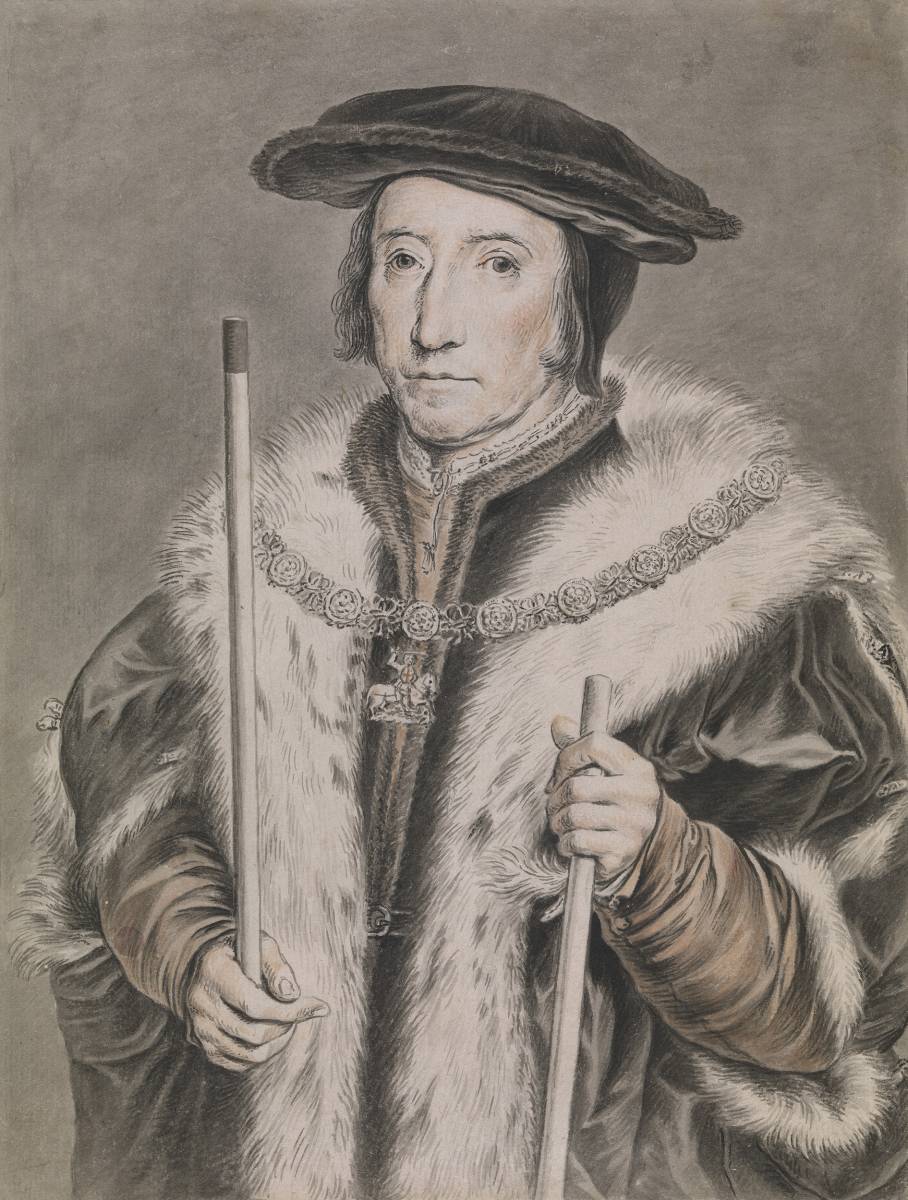Hans Holbein and the Howard family were central figures in George Vertue's antiquarian researches into the history of art in Britain.
Thomas Howard, 3rd Duke of Norfolk was one of Holbein's major patrons and Vertue made several notes on the traditional story that Holbein died of the plague in the Duke's London house: 'Holben was always a favorit of the old Duke of Norfolk.'[1] Vertue also recorded that many of Holbein's drawings descended in the family to Thomas Howard, 14th Earl of Arundel, 'he who collected so affectionately the Workes of Holbein.'[2] In the 1620s the earl employed Lucas Vorsterman I to copy Holbein's portrait of his great-great-grandfather for an engraving. Arundel must have taken the painting with him when he moved to Antwerp in 1642, for it was listed in an inventory of the Arundel collection compiled in Amsterdam in 1655.[3] It was sold anonymously at an Amsterdam auction in 1732 before being imported back to London for re-sale in 1735, when Vertue saw it for the first time. It did not reach its reserve of £200 but fetched £300 when offered again in 1744.[4] The buyer was presumably Frederick, Prince of Wales for in 1750 Vertue saw the painting for a third time in his collection.[5]
Although Vertue knew Holbein's painting well, his immediate source for this copy was the watercolour by Vorsterman, which is now in the British Museum.[6] Vertue made another copy of Holbein's portrait of the 3rd Duke, for it appears hanging on the wall in the background of a group portrait by Van Dyck of the Earl of Arundel's family, from which Philips Fruytiers made a copy in watercolour in 1645. Vertue engraved Fruytiers's copy in 1743 on commission from Edward Howard, 9th Duke of Norfolk. In an apparent reference to this, Vertue wrote in about 1748: 'concerning a picture of Thomas Howard Duke of Norfolk the third of that family. I did draw from a small limning. for the Duke of Norfolks Collection.-of his family pictures.'[7] Vertue may have made the present watercolour after Vosterman for the same purpose. Vertue's engraving was not published until 1782, by John Thane who also probably owned Vosterman's watercolour as the British Museum acquired it from his son in 1846.
References
- Vertue, vol.V, pp.23, 37, 77; vol.IV, p.30.
- Vertue, vol.IV, p.30.
- Oliver Millar, The Tudor, Stuart and Early Georgian Pictures in the Collection of Her Majesty the Queen, Oxford, 1963, vol 1, p.60.
- Vertue, vol.III, p.122; vol.IV, p.83.
- Oliver Millar, The Tudor, Stuart and Early Georgian Pictures in the Collection of Her Majesty the Queen, Oxford, 1963, p.60. Vertue's earliest note of the painting was in 1718. Vertue, vol.I, p.41.
- British Museum, museum no.1846,0709.9.
- Vertue, vol.V, p.73. A copy of Vertue's engraving is British Museum, museum no.1979,U.1195, annotated with Vertue's own comments copied from a proof belonging to his widow in 1762.


